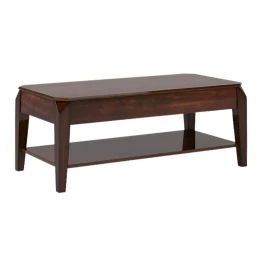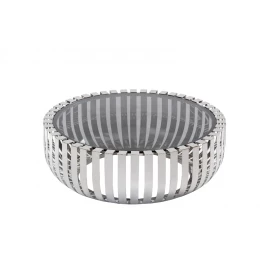Lap desks are relatively easy to find if you want to buy one. However, a lap desk that truly fits your needs and your décor is another story. For many years, I had a lap desk a friend gave me. It was never attractive to begin with, and over time, wear made it even uglier. I loved using it, but I hated looking at it.
My love/hate lap desk relationship sent me on a quest to find a lap desk large enough to be useful and pretty enough to look at. This turned into a far harder job than I thought it would be.
The lap desks I found were too small, and they were either too cutesy or too super-serious. I finally decided the only way to get the lap desk I wanted was to make it. So that’s what my husband and I did.
If you want a spacious, inexpensive lap desk that you can customize to fit perfectly with your décor, here are the seven steps to getting it.
Step 1: Buy the Materials
You will need:
- A bed pillow
The pillow size you choose will determine the size of your lap desk. The style (foam, feather, memory foam etc.) will determine what the lap desk feels like nestled on your lap. I chose a pillow that allows me to create a 24-by-17-inch lap desk. I chose memory foam because of its ability to conform to its space, which creates a stable surface for the desk.
Cost: $30
- Fabric
You need enough fabric to cover one flat surface and the sides of your pillow, with at least 3-4 inches of extra material (which you’ll be affixing to the flat surface of your desk). I purchased one yard of fabric to do two 24-by-17-inch lap desks. (The fabric came with a 48-inch width.) Obviously, pick a fabric that matches your existing décor. Upholstery grade fabric will wear better than lighter fabrics.
Cost: $5
- Quarter-inch plywood
You need double the amount of wood for the lap desk dimensions you’re creating because your lap desk surface will have two layers. So for one 24-by-17-inch lap desk, you need two 24-by-17-inch pieces of wood. A half sheet of quarter-inch-by-8-foot birch plywood was enough for my two lap desks (four pieces measuring 24-by-17 inches each). If you have the tools, you can cut the pieces yourself. If you don’t, you can have your local lumber or home improvement store do it for you.
Cost: $10
- Molding
Your lap desk needs an edge so your items won’t slide off of it. I’ve found that a ¾-inch outside corner molding fits the desk best. You need enough ¾-inch outside corner molding to go around the edges of your lap desk. For one 24-by-17-inch lap desk, that means 82 inches total. You can cut the molding pieces yourself or have someone cut them for you.
Cost: $5
- Wood conditioner
This will prepare the wood for stain. This isn’t an essential material. You can get by without it. But it will help the wood take the stain better.
Cost for small can: $5
- Wood stain
Choose a color that goes well with your furniture. Stores sell stain in smaller containers. I have a larger one for other projects too.
Cost for small container: $5
- Polycrylic protective finish
You don’t need much, but this is essential to make your lap desk waterproof.
Cost for small can: $10
- Wood glue
A small bottle will do, but I always keep a larger bottle on hand.
Cost for small bottle: $2
Step 2: Gather Your Tools
You’ll need the following tools for this project:
- A saw (only needed if you’re cutting your own wood)
I used a chop saw, but a radial or a circular saw will work as well.
- Latex gloves (useful for when you’re staining the wood)
- Cloths and brushes
Old cloths and standard brushes or foam brushes are for staining and applying the polycrylic protective finish.
- Scissors (only needed if your fabric is larger than required)
- A staple gun
You could glue the fabric to the plywood, but stapling it is much easier and will make your finished product more secure.
- 220-grit sandpaper
Step 3: Cutting the Pieces
- Cut two pieces of wood at the size you want your lap desk to be (whatever size pillow you purchased).
- Cut the molding into four pieces: two pieces for the long sides, and two pieces for the shorter sides. Add 1/8 of an inch to each side piece because once you assemble the pillow, fabric, and plywood, the side measurements will increase by 1/8 of an inch. So for a 24-by-17-inch lap desk, I cut two pieces of molding sized 24 and 1/8 inches and two pieces of molding sized 17 and 1/8 inches. Remember to create diagonal 45-degree cuts so the molding fits well at the corners.
Step 4: Staining the Wood
Once you’ve cut your pieces, follow this process for staining:
- Apply the conditioner.
Using a regular or foam brush, apply one coat of wood conditioner to the top of all the molding pieces and one of the plywood pieces.
- Stain the wood.
Using a soft cloth, apply a light coat of stain to the one plywood piece and the molding. Don’t let it puddle. Smooth it out. Let it dry for four hours before sanding.
- Lightly sand every stained piece.
- Repeat the staining and sanding process until you get the wood color you desire.
My lap desk only took two coats. Be sure to wipe the wood down with a clean cloth in between sanding and applying a second coat.
- Apply the polycrylic protective finish.
Dilute your polycrylic protective finish with water at a ratio of three parts finish to one part water. Then use a fine bristle brush or a foam brush to apply it to your lap desk. Thinning it with water keeps the air bubbles to a minimum, which creates a smoother surface. Let it dry for four to six hours. Repeat this process four times. You can get away with less, but if you intend to use your lap desk for food, the more protected the wood is, the better.
- After you’re done staining and sanding the last time, wipe the wood with cheesecloth.
This process will buff up the shine on your wood.
Step 5: Cover the Pillow
- Iron your fabric.
- Lay your fabric flat and put the pillow on top of it.
- Place the unstained plywood on top of the pillow.
- Pull the fabric up around pillow and wood and staple into place.
- To do the ends, fold them as you would when wrapping a present.
Step 6: Glue the Top Piece On
- Glue the stained plywood piece (stained side up, obviously) to the wood on which you stapled your fabric. Put the glue on the bottom wood piece (the one that has the fabric stapled on it).
- Then press the stained piece of wood down on top of that.
- Set the lap desk aside, cover it with a towel, and place heavy books or weights on top of it to set the glue.
Step 7: Glue on the Molding
- To glue the molding in place, put a towel on top of the lap desk with weights or books on top of that. You’re going to carefully position your molding pieces, and hold them in place with the weights.
- Now take one molding piece off at a time, and add glue to the inside of the molding.
- Then carefully replace the molding.
Do this for all four sides. Keep weights in place on other three sides while working, and leave weights on all four sides to dry.
- Let the glue dry overnight.
And there you have it! Now you’ve got a lap desk designed specifically for your needs and for your décor. This lap desk doesn’t have to be tucked out of sight. It can actually add layers to your interior design. Although you can just display your lap desk as shown at the top of this article, you can also set it on a table and style it with a vignette.
The same vignette on a flat tabletop isn’t as interesting.
Or you could use your lap desk to replace an ordinary centerpiece with off-to-one-side dining table display.
As long as you use your lap desk for simple displays, in seconds you can remove the display and take your lap desk wherever you want to put your feet up and work or play or eat.
Do you have creative ideas for personalizing a lap desk to your style? Perhaps using a different material for the flat surface or a different base? Let’s hear your suggestions.

























